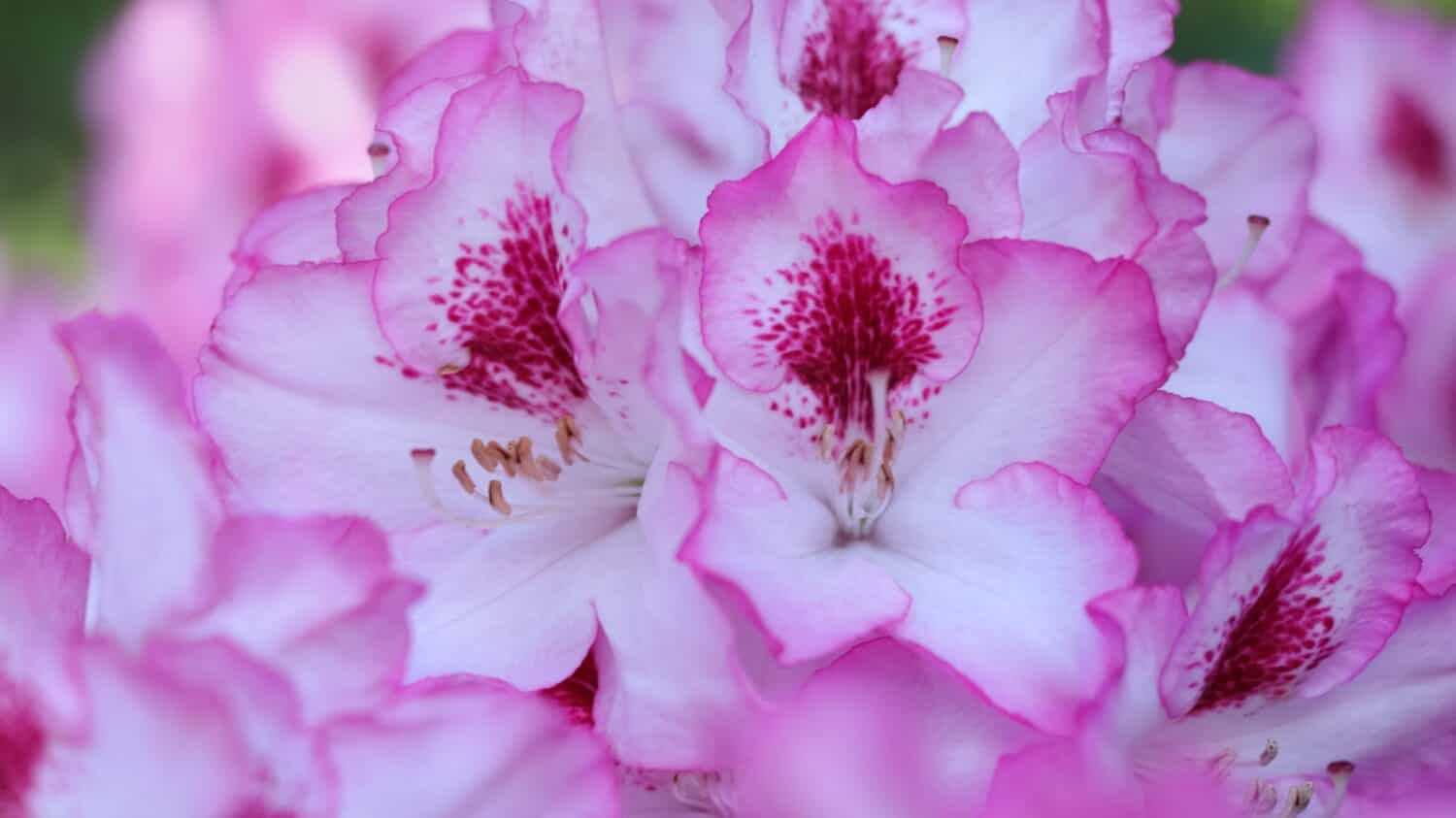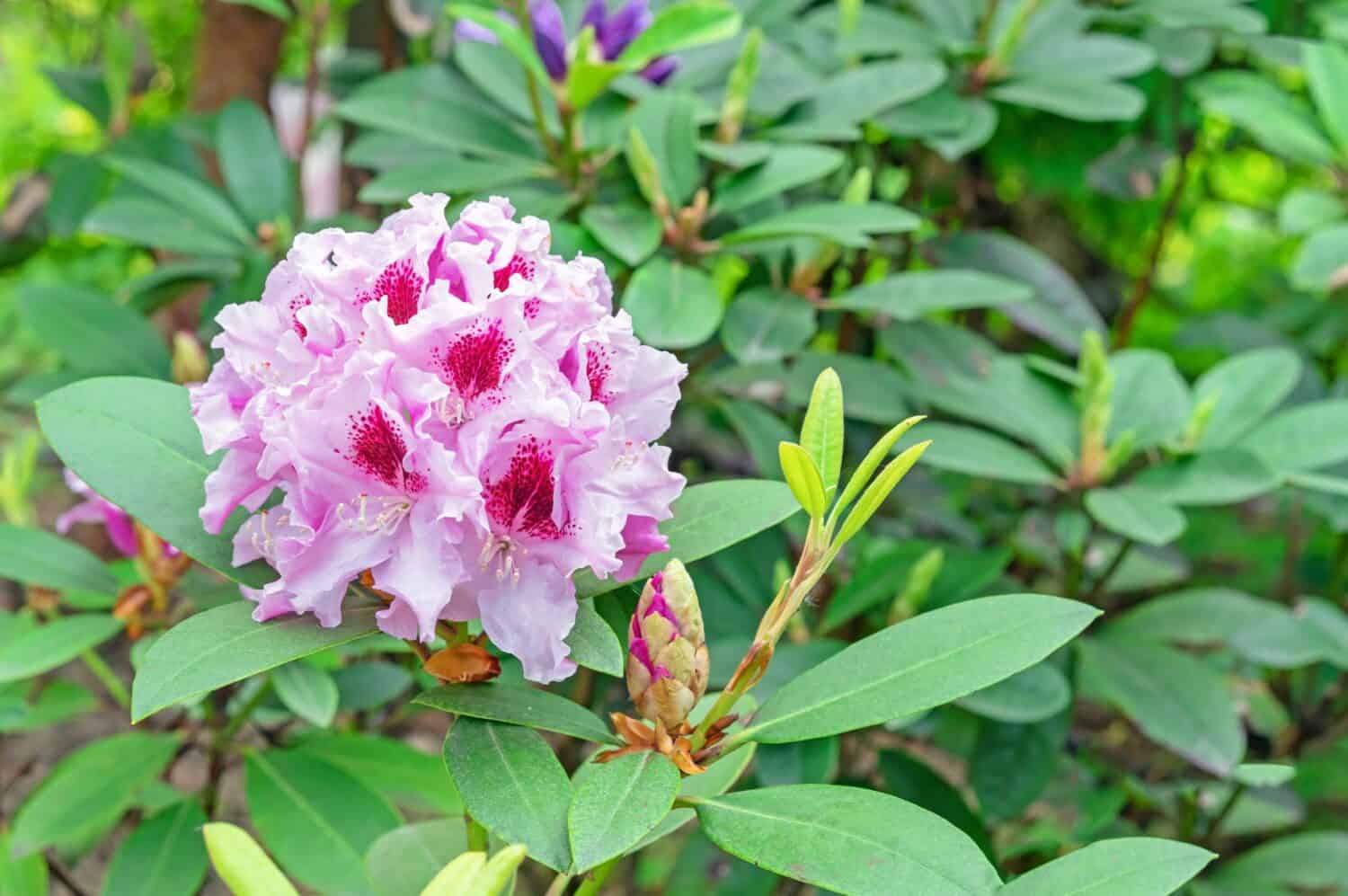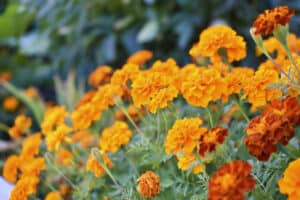Each state in the United States has official symbols that honor its unique history and natural resources. A flower is one of these symbols that is generally recognized and admired across the majority of states. This includes the state of Washington. Discover more about the flower that serves as the official state symbol for Washington right here!
What Is The Name Of Washington’s Official Flower?

, often known as coast rhododendron, is the state flower of Washington.
©Powerofflowers/Shutterstock.com
The state of Washington’s official flower is a native species called the Rhododendron macrophyllum, or coast rhododendron (meaning rose tree with huge leaves). It is also known as the California Rhododendron, Pacific Rhododendron, or California Rosebay.
A group of women in Washington chose the coast rhododendron as their state flower in 1892, long before they could vote. They were looking for a designated bloom to submit to the 1893 Chicago World’s Fair Floral Show. The legislature designated it in 1959 as the official state flower.
Over a thousand distinct species are included in the genus Rhododendron, which is itself widely distributed. The beauty of the state flower of Washington, however, certainly stands out.
When does the Coast Rhododendron Bloom?
A stunning native flowering shrub of the Pacific Northwest, the wild Pacific rhododendron (also known as coast rhododendron) begins flowering in late April or early May at lower elevations, and in late May or late June at higher altitudes in the mountains.
Beautiful, low-maintenance, and undesirable to deer, Pacific rhododendrons are a common sight in local gardens these days. They serve mostly aesthetic purposes for humans, as decorations in gardens and bouquets. The latter is what led to the Pacific rhododendron being officially recognized as the state flower of Washington.
What Does It Look Like?

One of the most stunningly gorgeous American flowers is the rhododendron.
©Thomas Hagenau/Shutterstock.com
The rhododendron, the state flower of Washington, is one of the most beautiful native flowers in America. This Rhododendron, native to Washington, is the western analog to the eastern Rhododendron and can reach heights of twenty feet. Washington’s Rhododendron, in contrast to its eastern counterpart, has leaves that droop when the temperature drops below freezing.
The bell-shaped flowers have five petals that are curved at the edges and occur in clusters of about 15 to 20 blossoms. The flowers can be any shade of pink, from white to deep magenta, though pastel pink is the most common. They’re typically flecked with yellow, too.
The leaves range in shape from elliptic to oblong and are a leathery dark green color. They can be anywhere from 3 to 8 inches long and 1 to 3 inches wide. They do not shed their leaves in the winter because they are evergreens. Leaves can fold themselves up for warmth when the temperature drops. It takes 2-3 years for the leaves to fall off.
Coast rhododendron starts to bear fruit (seeds) about the fifth year of their existence. Between August and September, seeds are generated in reddish-brown capsules that can store their viability for up to two years.
Where Can You Find It?
The evergreen coast rhododendron, the state flower of Washington, is a unique species of rhododendron that can only be found on the western coast of North America. Its broad, lobed leaves are a distinctive feature of this plant. Although it can be found in the Cascade Mountains in Oregon, Washington, and British Columbia, the coast rhododendron is most commonly seen in the areas immediately adjacent to the Pacific Ocean. This is why it is also called the Pacific rhododendron.
The lowest point it grows is at sea level, and the highest point is around 6,000 feet above sea level. In the state of Washington, the Cascade Mountains and the Olympic Peninsula are two of the best areas to visit in order to view the state’s indigenous flora.
What Does It Symbolize?

The state flower of Washington has a special significance in the rituals and customs of many different societies.
©Mariia Romanyk/Shutterstock.com
The sighting of a coast rhododendron is generally interpreted as a warning that trouble is on the horizon. However, the blossom of the rhododendron has a distinct meaning in the beliefs and practices of a number of other cultures. For some, the state flower of Washington is a sign of refined taste, affluence, ardor, and plenty; while, for others, it is a portent of impending death. The fact that it is poisonous is almost certainly connected to the relevance of this.
Rhododendron Toxicity
Rhododendrons of all types, including the Coast rhododendron, are responsible for the production of the neurotoxin grayanol throughout the plant. Because of their high level of toxicity, rhododendrons should never be consumed by either animals or humans. On the other hand, it is only dangerous at extremely high concentrations. All living things on land, including humans and particularly bees, are susceptible to the effects of these toxins.
Certain species, such as mountain beavers, have been observed consuming these toxins. Symptoms of grayanotoxin poisoning include fatigue, weakness, nausea, vomiting, and low blood pressure. Grayanotoxin exposure can also cause irregular heartbeats.
Thank you for reading! Have some feedback for us? Contact the AZ Animals editorial team.








